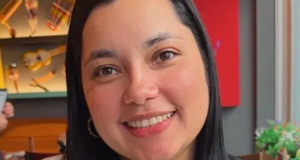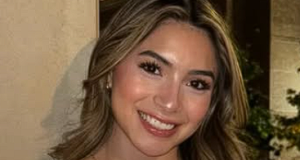U.S. Attorney General Eric Holder on Thursday promised a full investigation into the choking death of an unarmed black man by a white New York police officer as protests flared for a second day over a grand jury's decision declining to bring criminal charges in the case.
Reaction to Wednesday's decision not to indict officer Daniel Pantaleo for his role in the videotaped confrontation that left 43-year-old Eric Garner dead echoed a wave of outrage sparked nine days earlier by a similar outcome in the fatal shooting of an unarmed black teenager by a white policeman in Missouri.
Pantaleo could still face disciplinary action from an internal police investigation, his lawyer said, adding that he expects that process to move quickly and that his client would be exonerated.
A departmental investigation will likely focus on whether Pantaleo employed a chokehold, banned by New York Police Department regulations, in restraining Garner as he and other officers sought to arrest him for illegally selling cigarettes on a sidewalk in July.
In addition to triggering protests around the country, the New York and Missouri cases have re-ignited debate over a U.S. law enforcement system widely perceived to unfairly target and African Americans and other minorities.
Speaking in Ohio, where he announced U.S. Justice Department findings of systematic excessive force by Cleveland's police, Holder said officials must do more to repair the trust between police officers and the communities they patrol.
The Cleveland investigation, which began in March 2013, gained prominence after a police officer there last month shot dead a 12-year-old boy who was carrying what turned out to be a pellet gun on a playground.
New York City Mayor Bill de Blasio, who took office in January promising to improve relations between minorities and police, told reporters on Thursday the city's thousands of patrol officers would undergo extensive retraining.
"The relationship between police and community has to change," he told a news conference. "People need to know that black lives and brown lives matter as much as white lives."
CHOKEHOLDS BANNED
Pantaleo's lawyer, Stuart London, said in an interview Thursday that his client testified to the New York grand jury that he never put pressure on Garner's neck. Instead, Pantaleo said he used a proper takedown technique, London said.
Patrick Lynch, president of the patrolmen's union, agreed, calling Pantaleo a "model" officer at a news conference.
The city's medical examiner has said police officers killed Garner by compressing his neck and chest, adding that Garner's asthma and obesity had contributed to his death.
Video footage from a bystander's mobile phone of Garner being subdued by four police officers just before he died shows Pantaleo's arm pressed across Garner's throat as he lay on a Staten Island sidewalk, repeatedly gasping, "I can't breathe" -- a phrase that has become a rallying cry by demonstrators.
Although chokeholds are banned by New York City police regulations, the 2,000-page patrol guide is vague about whether such use of force can be allowed under certain circumstances, said Maria Haberfeld, who heads the law and criminal justice department at John Jay College.
That gray area, she said, may have influenced the grand jury inquiry and could play a role in determining whether Pantaleo later faces departmental discipline.
PROTESTS SPREAD
The panel's decision sparked protests by hundreds of people who swarmed the streets of midtown Manhattan on Wednesday night, culminating in 83 arrests, according to police.
People also demonstrated in other cities, including Oakland, California, Washington, D.C., Denver and Minneapolis.
Demonstrators in New York City and elsewhere returned to the streets on Thursday evening. Hundreds of chanting protesters gathered for a noisy but peaceful rally in lower Manhattan, then began marching toward the Hudson River, snarling evening rush-hour traffic.
In Minneapolis, dozens of protesters blocked northbound traffic on Interstate 35W on Thursday afternoon, at times marching or lying down in the middle of the highway, escorted by police in squad cars seeking to keep the demonstrators moving.
The protests were largely peaceful, in sharp contrast to the night of arson, looting, vandalism and sporadic gunfire that swept St. Louis suburb of Ferguson, Missouri, after a grand jury decided on Nov. 24 not to indict Ferguson police officer Darren Wilson for fatally shooting 18-year-old Michael Brown.
The Justice Department has already launched a separate probe of the Aug. 9 shooting in Ferguson. Holder acknowledged on Thursday that the bar for bringing federal civil rights charges is high but said his department has met that standard when appropriate.
Michael Selmi, a professor at George Washington University and former litigator in the Justice Department's Civil Rights Division, said announcing a federal investigation following a controversial state grand jury decision is a tool the Justice Department can use to ease tensions, though it rarely leads to a conviction.
He pointed to the federal investigation into the case of George Zimmerman, the neighborhood watchman who shot and killed unarmed black teen Trayvon Martin in 2012, which has yet to be concluded.




